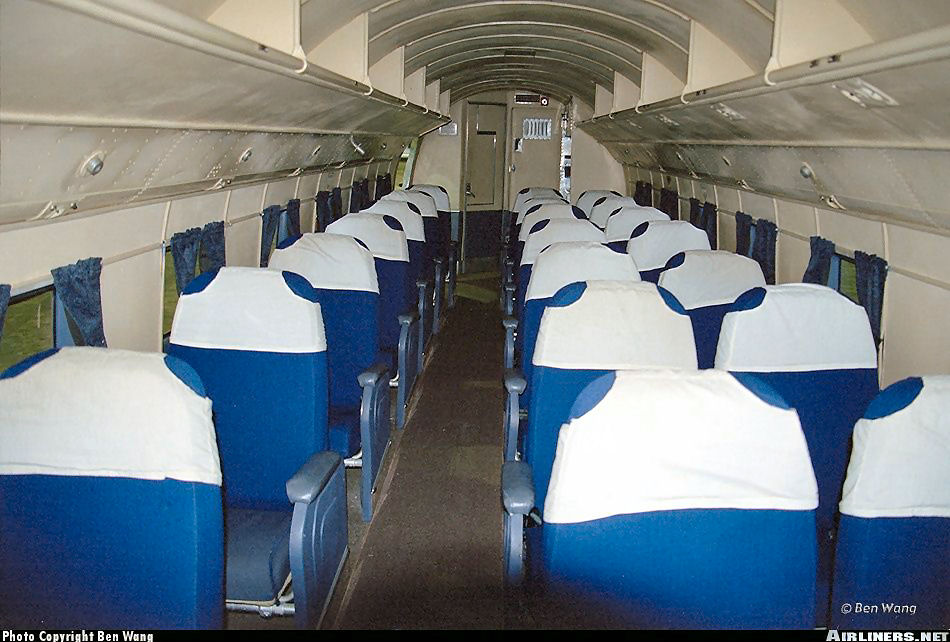In the commentary herein on the real DC-3/C-47 almost every facet has been covered in some detail: cockpit, engines, weight and balance, technical specifications, etc. However, the source of revenue part of the aircraft has received short shrift � that would be the passenger cabin.
Early DC-3s were configured for twenty-one passengers; seven rows of three seats each. But the DC-3 was so popular and so well designed that airlines clamored for greater passenger carrying capability; namely a twenty-eight-passenger cabin of seven rows and four seats per row.
That configuration became very popular with the airlines, probably much less so with the passengers, however, since there was only one way to carve in four seats were three had previously existed: make them narrower, much narrower.
The washroom was at the rear of the aircraft, across the aisle from the passenger entrance. Passengers were allowed to smoke on board the aircraft, including in the washroom, which is so explicitly prohibited today in the safety announcements. No smoking was allowed except while in the air, however.
Since the DC-3 was an unpressurized cabin, passenger windows were large enough to actually see out of. So, low and slow coupled with large passenger windows made DC-3 flights very enjoyable.
I prefer to remember the twenty-one passenger cabin. We are fortunate that a picture of such a cabin is on the airliners.net website, photographed by Ben Wang. Ben was kind enough to grant DC-3 Airways permission to post that on our website, and here it is.

Ben photographed this cabin in Fort Worth, Texas on April 21, 2002. The aircraft was in the American Airlines C. R. Smith Museum there and was named "Flagship Knoxville." Thanks very much, Ben.